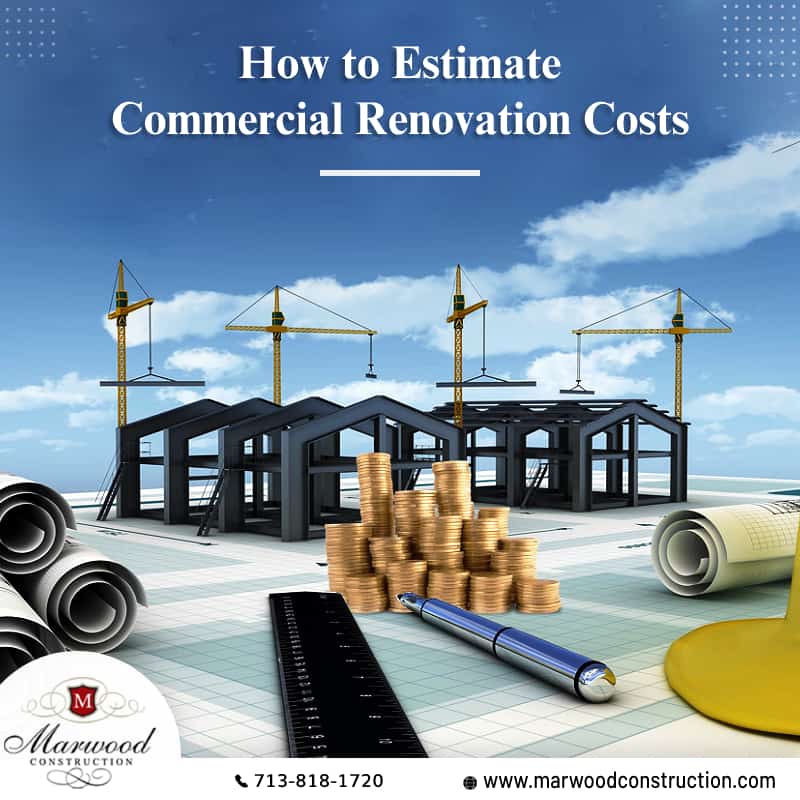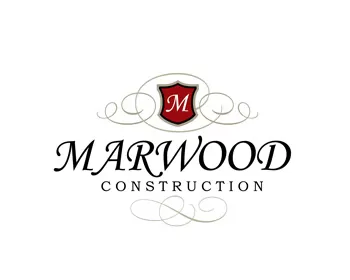Renovating a commercial space for reasons such as expansion or modernization, can be both exciting and challenging. Among the challenges that come with such a project is estimating the cost of construction. This is of critical importance as you, as a project owner, do not want to overshoot the budget and end up being hamstrung with no or less money to continue. So, how do you go about calculating the cost of a commercial renovation project? It is only possible when you understand the variables that drive such expenses thereby making the process of commercial remodeling less stressful. You may read our resource on commercial contracting and the various aspects associated with it.
Estimating the cost of commercial construction (remodeling)
When it is about estimating the cost of commercial construction or renovation, there is no standard rule to follow. The expenses involved in such construction can vary depending on a host of factors such as labor costs, construction cost, material cost, and other onsite operational costs. Besides, certain unforeseen factors can drive the costs either northwards or southwards. Hence, depending on the variables at play, the costs could be anywhere from $35 per square foot to $350 per square foot. It is better to understand the factors behind determining the cost as mentioned below:
Location:
This is as simple as it can get. The price of commercial renovation in say, New York, will certainly be many times higher than in a Midwest suburb. This is because factors such as building code regulations, labor, and material costs can vary depending on the location. According to some estimates, location can be a variable in determining about 70% of the overall costs. Also, the weather condition of a location can impact the renovation cost. For instance, adverse weather phenomena such as storms, floods, or heat waves can increase the construction cost by 50%. This is due to the fact that commercial construction companies would charge a premium to operate in such conditions.
Quality of the property:
Commercial construction cost and consequently commercial properties market rent values are determined by their locations, finishes and amenities. Commercial properties and their finishes can be classified into three types as mentioned below:
Class A:
These are premier quality buildings fitted with the latest fixtures and features such as cool facades, well-furnished interiors, elevators, HVACs, etc. Such commercial buildings are mostly situated in higher rent areas and have building management onsite.
Class B:
These types of buildings are fitted with average fixtures, which are not comparable to the ones in Class A type buildings. Most commercial properties are Class B buildings. They are generally older properties that have average finishes and amenities. They may or may not have onsite building management.
Class C:
These types of buildings are mostly located in lower-income areas and do not have a large number of modern fixtures or features worth mentioning. These are by design and ownership to provide affordable and minimum cost rental space to the tenants.
Hence, the class of a commercial property to be renovated determines the cost in a large measure. In case you can’t figure out the differences between commercial construction, remodeling, and renovation, you may read our blog.
Building codes:
There are different levels of building codes. This begins with the national building codes such as International Building Code, National Fire Protection Association and the Americans with Disabilities Act. Within these building construction standards are 4 primary building code trade disciplines; Structural, Mechanical, Electrical and Plumbing. These 4 primary trades have their own defined compliance building codes.
Commercial contractors are responsible for following the mandated building codes. Each state and local municipality will require the national building codes for their local building ordinances. The local building codes normally adopt the national codes and then supplement them with the local ordinances specific to each governing body. Since they constantly evolve and change, any commercial remodeling project should take into account such codes to prevent facing any problems down the road. Further, building codes are generally determined by a variety of factors including environmental, wind load, life safety, energy, and handicap accessibility. And complying with the same can increase the renovation cost further. Applicability of the latest building codes will depend on the extent and the type of renovation to be undertaken.
Compliance with historic district norms:
If the commercial property is situated in a historic district with additional code regulations, then there may be other considerations involved. These include conducting due diligence, which may limit the structural or material options or take an inordinately long time to obtain all permits and regulatory approvals. Even though this factor may not directly impinge on driving the cost of commercial construction, the delayed approvals can put a spanner in the works. As the cost of materials and labor does not remain static, any delayed start to the commercial renovation project can increase the cost.
Design and architecture:
The overall cost of the construction project will depend on its design and architecture including shape classifications. For instance, any reduction in the floor area or the exterior wall area will lead to a reduction in cost per square foot. Thus, the more complex the architectural design of the commercial property is, the higher will be the cost. This is because complex construction would involve more contractors, specialists, and materials. This fact plays a much more significant role in new commercial construction then commercial remodeling or renovations. This is due to the commercial remodeling contractors primarily focusing on the interior build out of the commercial space. But in some cases, it is more cost effective to renovate the commercial buildings shell then to demolish the building and construct a new building.
Building use:
The ultimate use of a commercial property will affect its overall renovation cost in terms of its materials, structural concerns, and equipment. To cite an example, a warehouse facility without any air conditioning or temperature controlling mechanism will cost less per square foot vis-a-vis a sophisticated laboratory equipped with state-of-the-art fixtures, specialized equipment, plumbing, and electrical requirements. Buildings meant to serve the public and facing higher footfalls may need the use of materials with greater durability. Thus, buildings with specialized use such as medical offices, hospitals, or laboratories will cost more than say, an office or retail space. Again, should a commercial building be subjected to transformation or adaptive use renovation, the cost can go up significantly. For instance, when a warehouse is changed into a retail space or hospital, it should undergo major changes to meet the safety and usability criteria thereby driving the cost upwards. The change of use can cause the design loads of the structure to change. When that happens it is required to supplement the load carrying capacity of buildings through various strengthening methods.
The number of disciplines involved:
Not all commercial renovation projects have a multitude of disciplines involved. For instance, a simple indoor renovation may involve up to three disciplines. On the other hand, renovating a bigger facility, say a hospital, would involve a large number of disciplines. These may range from civil engineering, architectural engineering, environmental engineering, structural and MEP engineering, and construction management. With the increase in the number of disciplines and the involvement of specialists, the cost may go higher. Also, should the specialists need to be sourced from different agencies or companies, the cost may rise even more.
Labor:
Executing commercial remodeling of a property in a location that is outside the metropolitan areas can entail cost savings to a significant extent due to the availability of relatively cheap labor. Further, renovating a commercial property in a location facing adverse weather conditions (severe heatwave, torrential rains, or high wind speeds) can increase the cost of labor by 30% to 50%. This is due to the fact that it is hard to get skilled labor or commercial builders working in such conditions and even if they are found, they are likely to charge a premium for their services. In case you want to know how a commercial general contractor goes about doing his or her job for a commercial property, view our video.
Construction materials:
Here, the expenses include the cost of materials, shipping charges, and taxes and the materials include off-the-shelf ones, bulk ones, and fabricated stuff. The cost of materials increases depending on market volatility, the complexity of construction, and the logistics involved. For instance, using environment-friendly materials for flooring such as porcelain, hardwood, stone, or cork can be costly than say, lower-end materials like vinyl or carpeting. The same goes for partitioning the commercial space using materials such as glass, aluminum, or wood. So, for high-end renovation where the quality of materials is of premium value, the material cost will be in the higher range.
Installation of HVAC systems:
Every business enterprise operating from a commercial property wants enhanced efficiency and comfort in the form of air conditioning, heating, and other fixtures. Since the installation of such systems needs the presence of specialist subcontractors, the overall costs can rise. The air quality of commercial buildings continues to be a focus of tenant conversations, especially after the pandemic. Not only are energy codes getting stricter on commercial properties, better air quality is becoming a minimum standard. This requires the use of higher efficient HEPA air filters and greater SEER’s HVAC equipment.
Permits:
For any commercial renovation project, obtaining approvals from relevant bodies can be a costly proposition. Also, permit fees need to be paid to such bodies and would depend on the kind of renovation that needs to be executed and the location of the property. Commercial construction companies are generally being required to produce an asbestos survey as part of the permitting process.
Conclusion
Cost certainly is the decisive factor in planning any commercial contracting project. However, the cost can be minimized if there is a general understanding of various factors that affect the cost estimates. These may include selecting the right materials, following the build drawings, collecting in-depth project info, among others. The most effective method of obtaining a construction cost estimate is the visit with a short list of reputable commercial builders. You may read a blog to know about the factors that affect the cost of any commercial construction project.












